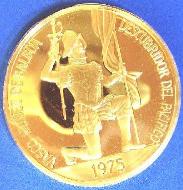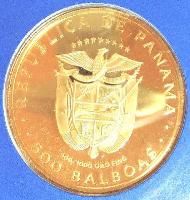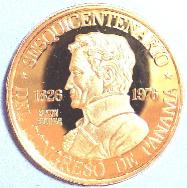
|

|

|

|
archive also available
| Chicago Coin Club | |
|---|---|
| Volume 47 No. 8 | August 2001 |
My apologies for this late issue. A week before my recent vacation ended, our big computer at work died completely; that was on July 20, and the club's web site has been down since then.
The same computer provides the club's email list,
so Carl Wolf has offered to construct a list
of members who wish to receive notes.
Please send your email address to Carl if you
wish to be added to this list.
carlwolfco@msn.com
If you want to send a note to that list,
send it to Carl and he will distribute it to the list.
No one will see be able to see the email address
of any other recipient; only Carl will know the addresses.
I look forward to a regular sized issue in September, including some members' trip reports from ANA in Atlanta!
Paul Hybert, editor
President Carl Wolf called the 990th meeting of the Chicago Coin Club to order on July 11, 2001 at 7:00 PM. The June Minutes as published in the Chatter were approved with one correction. Under the exhibit it stated that William Grundy had attended grad school at USC and it should have read that he received his Ph.D. from University of California, San Diego. In the absence of Lyle Daley, the club Secretary Treasurer, Jeff Rosinia gave the Treasurer's Report showing $7,369.10 in the treasury.
Robert Leonard was the featured speaker of the evening on the topic of American Fruit Picker Tokens from Coast to Coast. After the talk, Carl Wolf presented him with an engraved speaker's medal. Future speakers are: August 8th - Donald Dool San Martin in Numismatics; September 12th - Bruno Rzepka The Art of Steel Engraving; and October 10th - Mark Wieclaw Morgan Type Carson City Silver Dollars.
The exhibitors for the evening included:

|

|

|

|
Under old business Mark Wieclaw, Chairman of the 1000th Meeting Committee, reminded members that the deadline for design ideas is the August 8th meeting. The next committee meeting will be Tuesday, July 17th at Connie's Pizza. After a discussion a motion was made and passed to submit a $500 deposit to the hotel to reserve the banquet room.
Carl Wolf reported a telephone conversation he had that afternoon with Jack Huggins, President of the Illinois Numismatic Association. Due to a limit of affordable space the Association won't have an increase in speaker time slots as was hoped. President Huggins, however, is still looking for some new speakers dealing with general numismatic topics. The coin show is September 6-9 at the Park Place Banquet Hall, 6200 Joliet Road, Countryside, IL and anyone interested in volunteering should contact Carl Wolf.
Robert Leonard asked who else was attending the upcoming ANA Convention in Atlanta and asked for the specific ANA Board meeting time when Chicago will be proposed for the 2008 convention. Carl Wolf took on the responsibility to get an answer to the question.
Under new business Jeff Rosinia was requested to make December 12th reservations at the Mid Day Club for the Club's Annual Banquet.
After all business was finished, a general discussion ensued. Jeff Rosinia showed a souvenir stamp packet where the stamps had fused together from humidity in the air. Several members shared similar stories and a discussion evolved around monitoring and viewing your collection on a regular basis to spot deterioration as soon as possible. Robert Leonard also brought up the concept that Virgil Brand portrait should be considered for our 1000th meeting medal.
The meeting was adjourned at 8:43 PM.
Respectfully submitted by Carl Wolf, President and Acting Secretary
By Robert D. Leonard Jr., for our July 11 meeting.
For almost a century and a half-from the 1850's right up through very recently - tokens or tickets were considered an essential part of fruit farming. The U.S. Department of Agriculture, in Farmers' Bulletin No. 213, Raspberries, 1905, after discussing planting, cultivation, fertilizers, etc., advised growers that: "each picker is known by number and is furnished baskets or cups and a picking stand ... and as the baskets are filled and delivered to a receiving clerk, credit is given the picker either in the form of checks or other record by which a memorandum of the quantity picked by each is kept." These checks were originally metal tokens, but cardboard tickets and, more recently, plastic tokens or tickets have also been used. The tokens were later redeemed for cash, and often circulated locally. Over 2,500 fruit picker tokens are now known, but it is evident that many more remain to be discovered and attributed. All in all, fruit picker tokens are known from at least 24 of the lower 48 states.
While attractive aluminum picker tokens featuring plump strawberries were issued by a few places, most picker checks are utilitarian brass tokens or even cardboard tickets used by individual farmers. These colorful pieces are often hastily printed, with many typographical errors such as "Food for" in place of "Good for."
The earliest American pieces known are from Anne Arundel County, Maryland, beginning in 1853. They are simple iron discs stamped with initials, issued by John A. Hancock of Bodkin Point. Similar pieces are found with other symbols, and may be checks issued by other farmers. Joseph J. Sayre of Cincinnati issued store cards with a "Berry Check" reverse, listed as Fuld 165FE-1b in Fuld's U.S. Civil War Store Cards, but actually Sayre was apparently in business at this address only from about 1867 to 1876. Other checks of the post-Civil War period include brass tokens from Anne Arundel County, Maryland, beginning about 1870, and the holed checks patented in 1871 by A. A. Baker of Camden, New Jersey. All these pieces seem to have been used by farmers serving local markets.
However, with the railroad network essentially complete by 1890 and the invention of the refrigerated rail car, large-scale commercial growing of perishable berries became possible. While the first refrigerator car known to have been put in service began operating in June 1851, they did not become common until 1877 when Chicago meat packer Gustavus Franklin Swift used an improved design to ship dressed meat to the East. The refrigerator car was a key factor in the development of large farming areas in remote parts of the United States, particularly the Western citrus industry.
By the 1890's strawberry cultivation had become a staple in Southwest Missouri due to good market access by rail. In Sarcoxie, for example, commercial production began in 1883 and 200 carloads were shipped in 1897. Production on this scale required large numbers of metal tokens to pay the pickers, and the grower's associations arranged to have them redeemed by the local bank. Possibly the first Missouri strawberry tokens were issued by the Bank of Sarcoxie in the mid-1890's, as one of these is included in Wright's listing of 1899-1901 and the bank was renamed in 1900. During picking season these tokens circulated like money, and in 1922 the Secret Service took action against them. Later Missouri issues are cardboard tickets used by individual farmers.
In the 20th century, tokens and tickets were issued on a large scale by other strawberry centers such as Castleberry, Alabama, and Tangipahoa and Livingston Parishes, Louisiana; the cranberry industry in Grayland, Washington; and the dewberry growers of Moore County, North Carolina. Their usage continued into the 1990's, but now has been virtually eliminated by law. Agricultural workers were first covered by the Federal Minimum Wage act in 1966, though subject to a lower wage until 1978. When fully enforced, this law abolished piecework pay for farm laborers - and thus the need for fruit picker tokens. Beginning about 1983, a punch card system, in which both hours and production are recorded and pickers are paid weekly by check, has replaced tokens on all but the very smallest farms in Louisiana and Florida.
Fruit picker tokens reflect successive waves of immigrants who were glad to start at the bottom and accept such stoop labor jobs: Hungarians, Finns, Jamaicans, and Mexicans. Many were paid to African-American pickers, and a few were issued by Negro farmers. Others were paid to mere children, before the passage of child labor laws. In their unassuming way, they tell the story of American agriculture, railroading, immigration, even labor legislation. They were spent in tiny farm towns by poor migrant laborers or local children - one of the few tangible remains of a vanished American family farm economy.
by Mark Wieclaw
Topics discussed at the July 17, 2001 meeting included:
| August | 8 | CCC Meeting - Featured Speaker - Donald Dool on San Martin in Numismatics |
| September | 12 | CCC Meeting - Featured Speaker - Bruno Rzepka on The Art of Steel Engraving |
| October | 10 | CCC Meeting - Featured Speaker - Mark Wieclaw on Morgan Type Carson City Morgan Dollars |
| September | 1 | Fred K. White | 1991 |
| September | 2 | John Wilson | 1984 |
| September | 7 | James M. McMenamin | 1975 |
| September | 18 | Michael M. Dolnick | 1952 |
| September | 18 | Gregory Gajda | 1999 |
| September | 19 | Russell F. Wajda | 2000 |
| September | 21 | Kerry K. Wetterstrom | 1999 |
| September | 24 | Michael A. Pesha | 1979 |
| September | 25 | Saul Needleman | 1992 |
| September | 26 | Dennis P. Ciechna | 1999 |
| September | 27 | Edward Stevens | 1996 |
| September | 29 | Gordon R. Donnell | 1999 |
| Paul Hybert
ECE Dept, IIT 3301 S. Dearborn Chicago, IL 60616 |
| prh@ece.iit.edu |
| 1-312-567-3976 |
| Carl Wolf | - President |
| Robert Feiler | - First Vice President |
| Donald Dool | - Second Vice President |
| Directors: | Lyle Daley
William Burd Jeff Rosinia Mark Wieclaw |
| Other positions held are: | |
| Lyle Daley | - Secretary Treasurer |
| Paul Hybert | - Chatter Editor |
| Phil Carrigan | - Archivist |